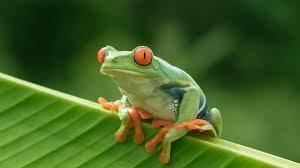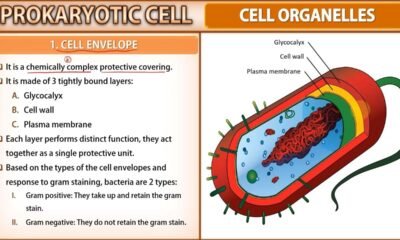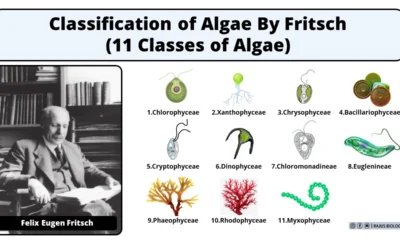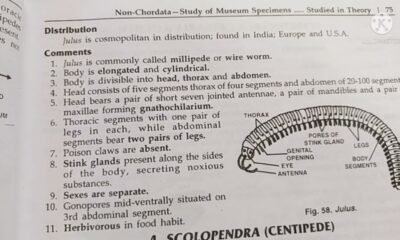Blog
Amphibia General Characteristics, Classification and Examples | Free Biology Notes

After reading this article you will learn about Amphibia General Characteristics, Classification and Examples
Amphibia General Characteristics
- They live in aquatic and terrestrial habitats
- First chordate animals which came out of water but are not able to live on land permanently, as they depend on water for their reproduction
- They are cold blooded animals
- These animals undergo hibernation (winter sleep) or aestivation (summer sleep) to prevent themselves from extreme cold and heat and to overcome unfavourable condition
- Body is divided into head and trunk. Tail may be present or absent
- Two pairs of limbs present. Fore limbs have 4 digits and hind limbs have 5 digits
- Skin is moist, glandular, smooth and scaleless
- Numerous mucus glands are found on skin, which help in moistening the skin
- Cutaneous respiration it means respiration occur through moist skin
- Pigment cells are found called as chromatophore for colouration
- Few amphibians have ability to change colour by expansion and contraction of pigment cells. This phenomenon is called metachrosis
- Digestive system is well developed, complete alimentary canal along with digestive glands are present
- Alimentary canal, urinary tract and reproductive tract open in a common chamber called cloaca
- Eyes have eyelids
- Respiration by gills, skins, lungs or Bucco pharyngeal cavity
- Heart is 3 chambered 2 auricle and one ventricle and double circulation present
- They are mostly ureotelic
- Ear consist of internal and middle ear. Tympanum covers the middle ear.
- Ten pairs of cranial nerves are present
- Sexes are separate. Fertilisation is external. They are oviparous and development is indirect
- Some members shows neoteny in which larva mature and start reproduction
Classification of Amphibia
The Amphibians are divided into three orders. The classification of amphibia is given below:
Order 1. Apoda or Gymnophiona
- These are primitive limbless amphibians
- Body worm like and burrowing in nature
- Scales present but embedded in skin
- Male has protrusible copulatory organ
- Eye without eye lids
- Parental care found
Examples of Apoda
Ichthyophis
- Female coil around eggs and provide parental care
- Tympannum absent
- Also called blind and deaf worm
Order 2. Urodela or Caudata
- Body is distinctly divided into head, trunk and tail
- They are called urodella as tail is found life long
- Two pairs of equal sized limbs present
- Copulatory organ absent in male
- Some members show neoteny
- Scales are absent in them
Examples of Urodela
Necturus (Water dog or mud puppy)
- It show permanent neoteny
- Tympanum is absent
- There are 3 pairs of external gills
- Tail bears caudal fin and they are nocturnal
Ambystoma (Tiger salamander)
- It exhibits the phenomenon of neoteny
- When there is iodine deficiency in water, the axolotl don’t change into an adult
Order 3. Anura or Salientia
- Tailless amphibian
- Eyes with eyelids (lover lid movable and upper lid immovable)
- Middle ear and tympanum present
- Body divided into head and trunk. neck absent.
- Fertilization is external and development through tadpole larva
- Forelimb small and hind limb long
Examples of Anura
Hyla (Tree Frog)
- It is adopted for life in trees
- Large vocal sac present
Rhacophorus (Flying frog)
- Webs developed between digits
- parental care found
Bufo (Toad)
- It inhibits on moist and dark shady places
- It bears poisonous gland (Parotoid gland)

 Blog7 months ago
Blog7 months ago[PPT] Human Reproduction Class 12 Notes
- Blog7 months ago
Contribution of Indian Phycologists (4 Famous Algologist)
- Blog7 months ago
PG TRB Botany Study Material PDF Free Download

 Blog7 months ago
Blog7 months agoCell The Unit of Life Complete Notes | Class 11 & NEET Free Notes

 Blog7 months ago
Blog7 months ago[PPT] The living world Class 11 Notes

 Blog7 months ago
Blog7 months agoClassification of Algae By Fritsch (11 Classes of Algae)

 Blog7 months ago
Blog7 months agoJulus General Characteristics | Free Biology Notes
- Blog7 months ago
Class 12 Biology Notes Chapter wise PPT












